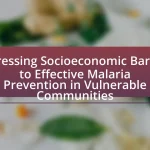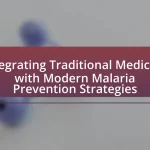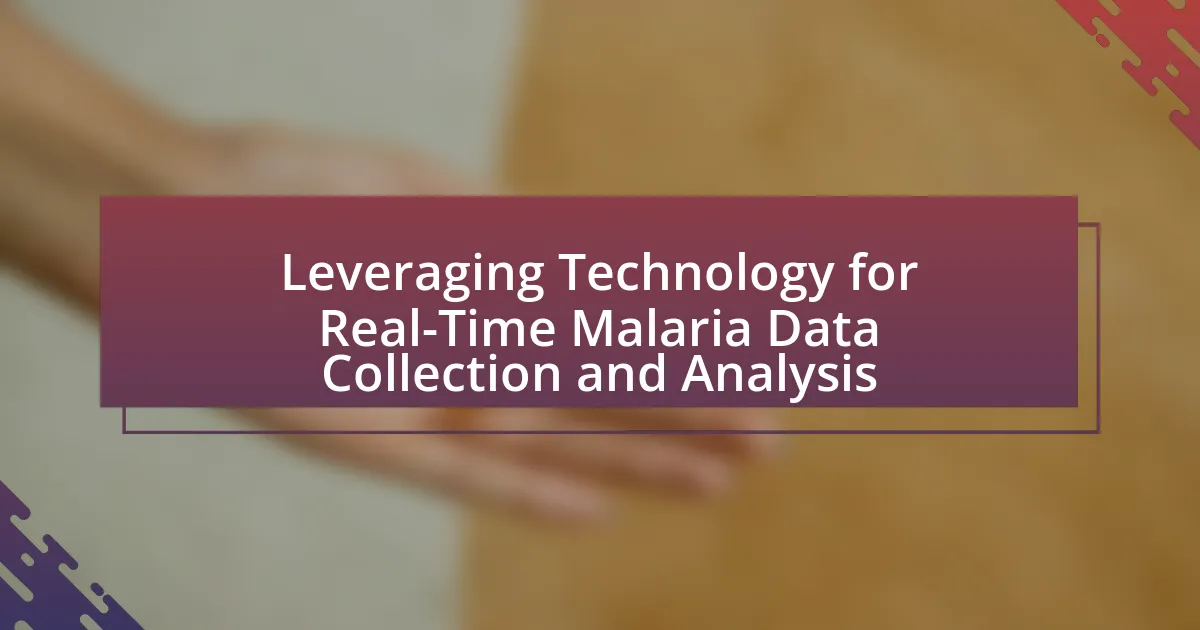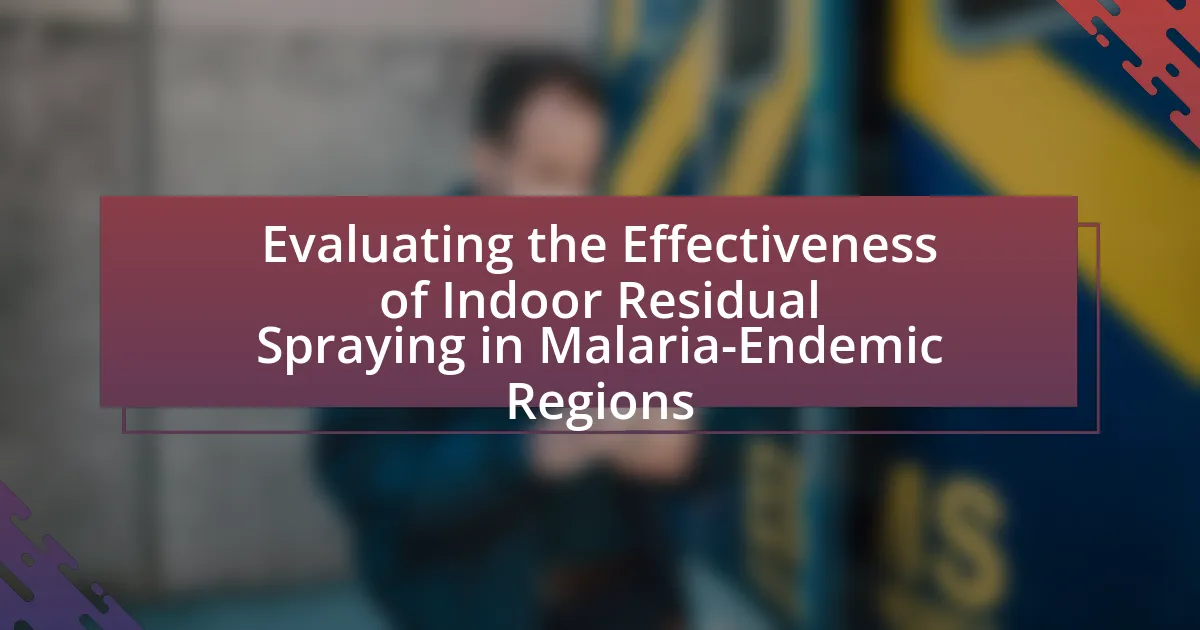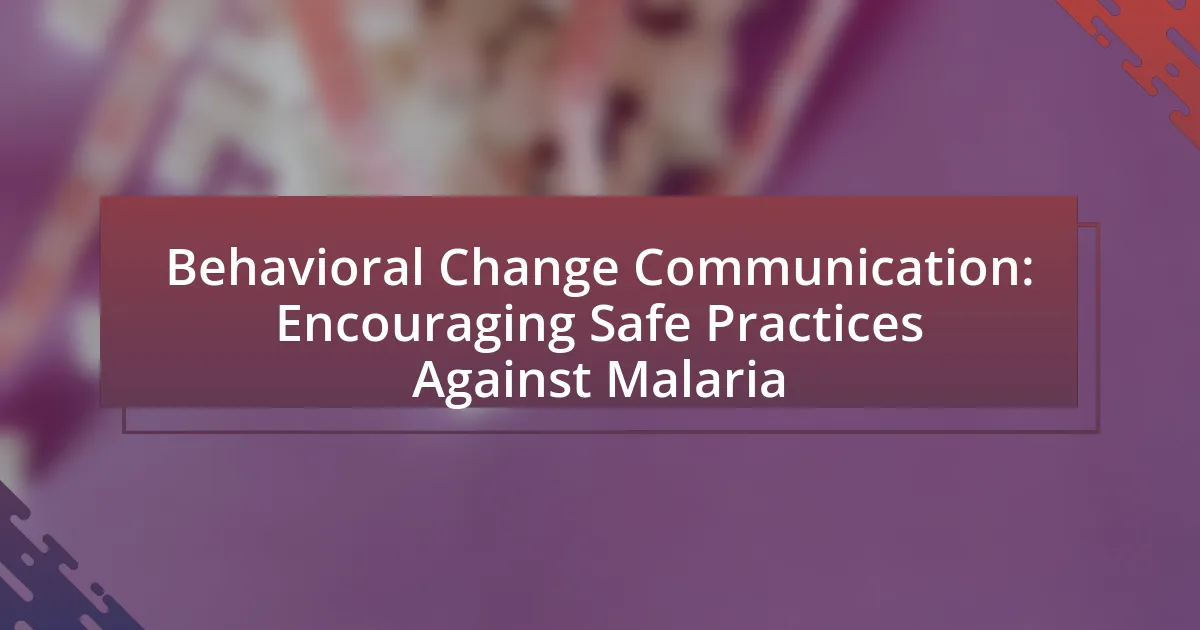Insecticide-Treated Nets (ITNs) are a critical intervention in malaria prevention, designed to protect individuals from mosquito bites, the primary vectors of malaria transmission. This article examines the functionality of ITNs, including their insecticidal properties and the types of insecticides used, primarily pyrethroids. It highlights the significant impact of ITNs on reducing malaria incidence rates, with studies indicating reductions of up to 50% in endemic regions. Additionally, the article addresses the challenges in distribution and cultural acceptance of ITNs, as well as best practices for maximizing their effectiveness in both rural and urban settings. Overall, ITNs play a vital role in community health by contributing to herd immunity and lowering healthcare costs associated with malaria treatment.
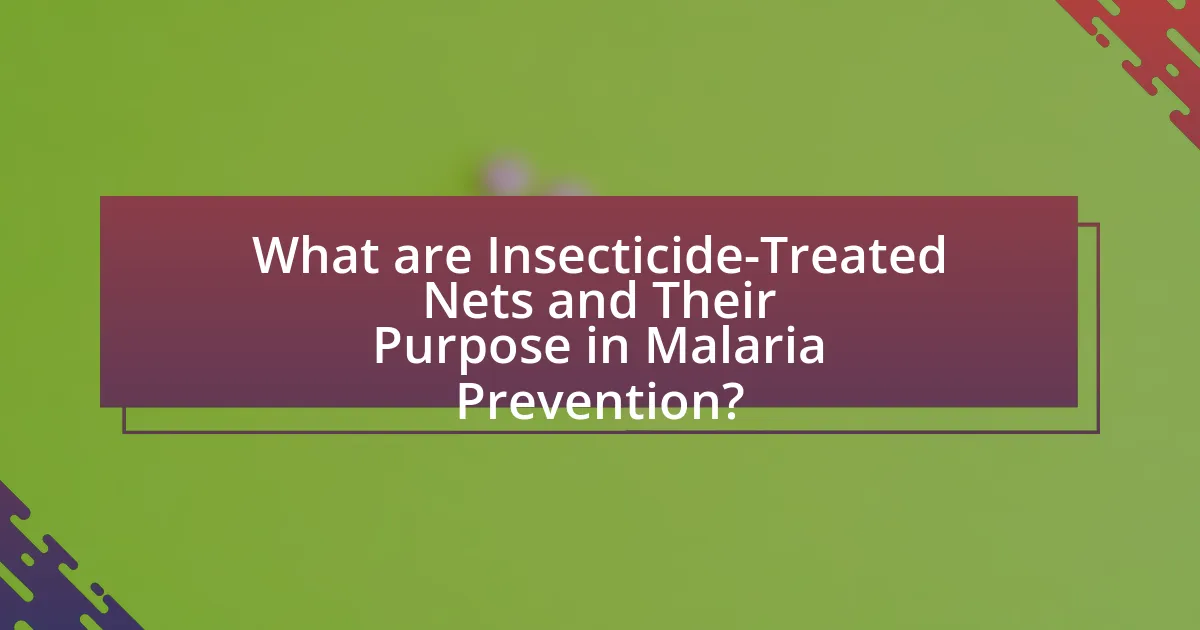
What are Insecticide-Treated Nets and Their Purpose in Malaria Prevention?
Insecticide-Treated Nets (ITNs) are bed nets that have been treated with insecticides to protect individuals from mosquito bites, which are the primary vectors for malaria transmission. The purpose of ITNs in malaria prevention is to reduce the incidence of malaria by providing a physical barrier against mosquitoes and delivering insecticidal action that kills or repels these insects. Studies have shown that the widespread use of ITNs can lead to a significant decrease in malaria cases; for instance, the World Health Organization reports that ITNs have contributed to a reduction of malaria mortality rates by up to 50% in some regions.
How do Insecticide-Treated Nets function in reducing malaria transmission?
Insecticide-Treated Nets (ITNs) function by providing a physical barrier against malaria-carrying mosquitoes while simultaneously delivering insecticide that kills or repels these vectors. The insecticide on the nets acts upon contact, reducing the likelihood of mosquitoes biting individuals sleeping under the nets. Studies have shown that the use of ITNs can decrease malaria transmission rates by up to 50% in endemic regions, as evidenced by a systematic review published in the Lancet Infectious Diseases, which highlighted the effectiveness of ITNs in reducing malaria morbidity and mortality.
What types of insecticides are used in these nets?
Insecticide-treated nets commonly use pyrethroids as the primary type of insecticide. Pyrethroids are synthetic chemicals modeled after natural pyrethrins, which are derived from chrysanthemum flowers. These insecticides are effective against mosquitoes, the primary vectors of malaria, and have been widely adopted in malaria prevention strategies. Studies have shown that pyrethroid-treated nets significantly reduce malaria transmission rates, contributing to public health efforts in endemic regions.
How do insecticides affect mosquito behavior?
Insecticides significantly alter mosquito behavior by affecting their feeding, mating, and resting patterns. Specifically, exposure to insecticides can lead to increased mortality rates among mosquitoes, which in turn reduces their population and disrupts their reproductive cycles. Studies have shown that insecticide-treated nets (ITNs) not only kill mosquitoes upon contact but also repel them, causing changes in their host-seeking behavior. For instance, research published in the journal “Malaria Journal” by Okumu et al. (2016) demonstrated that mosquitoes exposed to pyrethroid-treated nets exhibited reduced attraction to human hosts, thereby decreasing the likelihood of malaria transmission. This behavioral modification is crucial in the context of malaria control, as it enhances the effectiveness of ITNs in reducing mosquito-human interactions.
What are the key benefits of using Insecticide-Treated Nets?
Insecticide-Treated Nets (ITNs) significantly reduce malaria transmission by providing a physical barrier against mosquito bites and delivering insecticide that kills or repels mosquitoes. Studies indicate that the use of ITNs can decrease malaria incidence by up to 50% in high-risk populations. Additionally, ITNs contribute to community-wide protection through the concept of herd immunity, as reduced mosquito populations lower the overall transmission risk. The World Health Organization recommends ITNs as a key intervention in malaria control strategies, highlighting their effectiveness in saving lives and reducing healthcare costs associated with malaria treatment.
How do these nets contribute to community health?
Insecticide-treated nets (ITNs) significantly contribute to community health by reducing malaria transmission rates. These nets provide a physical barrier against mosquito bites, which are the primary vectors for malaria. Studies indicate that communities using ITNs experience a 50% reduction in malaria cases compared to those without them. Furthermore, ITNs not only protect individuals but also contribute to herd immunity, as lower transmission rates lead to fewer infections overall, thereby decreasing the burden on healthcare systems. The World Health Organization reports that widespread use of ITNs has been instrumental in decreasing malaria-related morbidity and mortality in endemic regions.
What impact do they have on malaria incidence rates?
Insecticide-treated nets (ITNs) significantly reduce malaria incidence rates. Studies have shown that the widespread use of ITNs can decrease malaria cases by up to 50% in areas with high transmission. For instance, a systematic review published in the Lancet Infectious Diseases found that ITNs led to a 63% reduction in malaria incidence among children under five in sub-Saharan Africa. This evidence underscores the effectiveness of ITNs in lowering malaria transmission and protecting vulnerable populations.
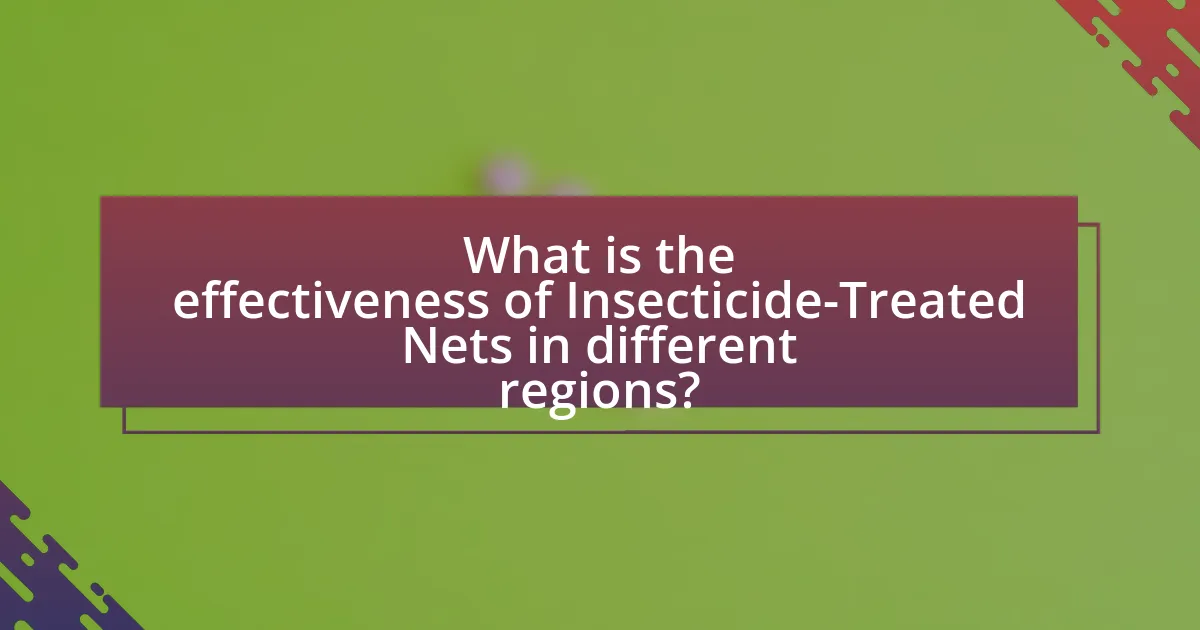
What is the effectiveness of Insecticide-Treated Nets in different regions?
Insecticide-Treated Nets (ITNs) are highly effective in reducing malaria transmission across various regions, with effectiveness varying based on local malaria transmission rates and insecticide resistance. For instance, studies in sub-Saharan Africa have shown that ITNs can reduce malaria cases by up to 50% in areas with high transmission, while in regions with significant insecticide resistance, the effectiveness may be diminished but still provides substantial protection. Research published in the Lancet Infectious Diseases indicates that consistent use of ITNs leads to a 20-30% reduction in malaria incidence even in areas facing insecticide resistance. This demonstrates that while the effectiveness of ITNs can be influenced by regional factors, they remain a critical tool in malaria control efforts globally.
How does the effectiveness vary by geographical location?
The effectiveness of insecticide-treated nets (ITNs) in reducing malaria transmission varies significantly by geographical location due to factors such as local mosquito species, resistance to insecticides, and environmental conditions. For instance, in sub-Saharan Africa, where malaria transmission is high, ITNs have been shown to reduce malaria cases by up to 50% in areas with effective insecticides and low mosquito resistance. Conversely, in regions where mosquitoes have developed resistance to the insecticides used in ITNs, such as parts of East Africa, the effectiveness can be markedly lower, with some studies indicating a reduction of only 20% in malaria cases. This variation underscores the importance of continuous monitoring of insecticide resistance and adapting malaria control strategies accordingly.
What factors influence the success of these nets in rural versus urban areas?
The success of insecticide-treated nets (ITNs) in rural versus urban areas is influenced by factors such as accessibility, community engagement, and environmental conditions. In rural areas, limited access to healthcare and lower population density can hinder the distribution and consistent use of ITNs, while urban areas often have better healthcare infrastructure and higher population density, facilitating easier access and education about ITN usage. Additionally, community engagement plays a crucial role; rural communities may have different cultural practices and beliefs that affect acceptance and usage of ITNs compared to urban populations, where awareness campaigns can be more effectively implemented. Environmental conditions, such as the prevalence of mosquito breeding sites, also vary between rural and urban settings, impacting the effectiveness of ITNs in reducing malaria transmission. Studies have shown that ITN coverage and usage rates are generally higher in urban areas, leading to more significant reductions in malaria cases compared to rural regions.
How do climate and environmental conditions affect their performance?
Climate and environmental conditions significantly affect the performance of insecticide-treated nets (ITNs) in reducing malaria transmission. High temperatures and humidity can enhance the efficacy of the insecticides used in ITNs, as these conditions can increase mosquito activity and biting rates, leading to higher exposure to the insecticide. Conversely, extreme weather events, such as heavy rainfall or flooding, can damage or displace ITNs, reducing their availability and effectiveness in preventing malaria. Research indicates that in areas with stable climates, ITNs can reduce malaria transmission by up to 50%, while in regions with fluctuating environmental conditions, the effectiveness may be compromised due to the factors mentioned.
What challenges are faced in the distribution and use of Insecticide-Treated Nets?
The distribution and use of Insecticide-Treated Nets (ITNs) face several significant challenges, including logistical issues, cultural acceptance, and sustainability of usage. Logistical challenges arise from difficulties in reaching remote areas, which can hinder timely delivery and accessibility of ITNs to populations at risk of malaria. Cultural acceptance is crucial, as some communities may not prioritize the use of ITNs or may have misconceptions about their effectiveness, leading to underutilization. Additionally, sustainability issues emerge when nets are not replaced regularly, as their insecticide efficacy diminishes over time, reducing their protective benefits. According to the World Health Organization, approximately 50% of households in malaria-endemic regions do not have access to ITNs, highlighting the distribution challenges.
What barriers exist in reaching vulnerable populations?
Barriers in reaching vulnerable populations include socioeconomic factors, lack of access to healthcare, and cultural beliefs. Socioeconomic factors, such as poverty, limit individuals’ ability to obtain insecticide-treated nets, which are essential for malaria prevention. Additionally, geographical barriers, like remote living conditions, hinder distribution efforts. Cultural beliefs may also lead to resistance against using insecticide-treated nets, as some communities may not recognize their importance in malaria prevention. According to the World Health Organization, these barriers significantly impact the effectiveness of malaria control programs, particularly in sub-Saharan Africa, where vulnerable populations are most affected.
How do cultural perceptions impact the acceptance of these nets?
Cultural perceptions significantly influence the acceptance of insecticide-treated nets (ITNs) in malaria prevention. In communities where traditional practices and beliefs about health and illness prevail, there may be skepticism towards ITNs, viewing them as unnecessary or ineffective compared to local remedies. For instance, studies have shown that in some African regions, cultural beliefs about mosquitoes and malaria can lead to resistance against using ITNs, as individuals may prioritize herbal treatments over modern interventions. Additionally, social norms and community leaders’ endorsements play a crucial role; when respected figures advocate for ITN use, acceptance increases. Research published in the American Journal of Tropical Medicine and Hygiene highlights that culturally tailored education campaigns can enhance the perceived value of ITNs, leading to higher usage rates.
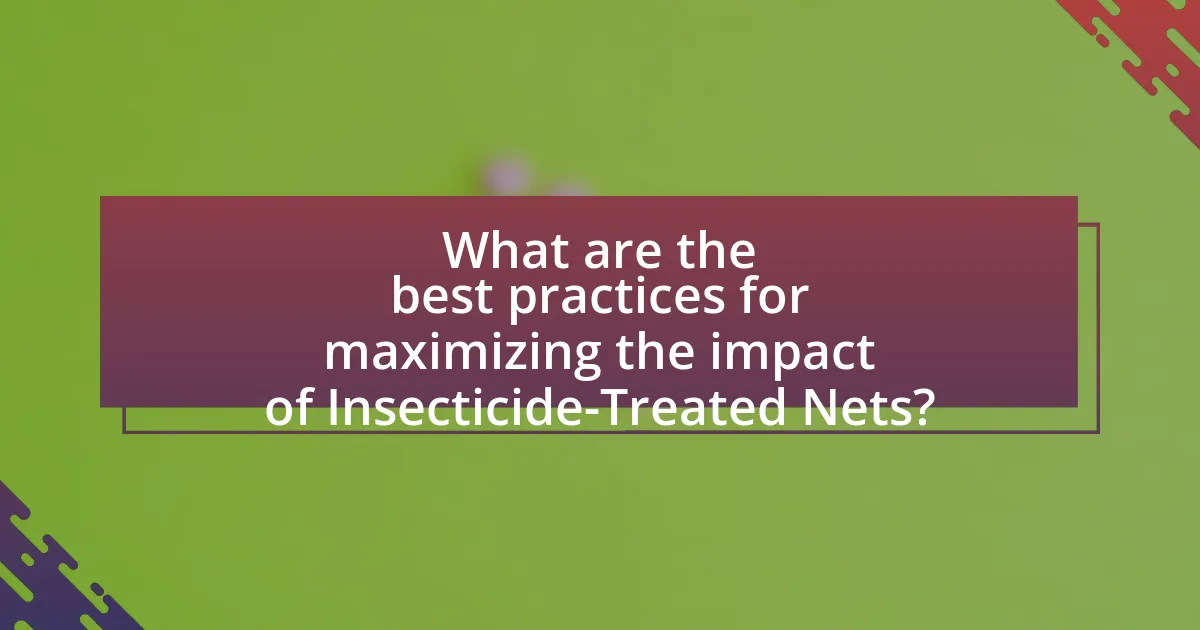
What are the best practices for maximizing the impact of Insecticide-Treated Nets?
The best practices for maximizing the impact of Insecticide-Treated Nets (ITNs) include ensuring universal coverage, promoting consistent use, and conducting regular maintenance. Universal coverage is critical, as studies show that communities with higher ITN ownership and usage rates experience significantly lower malaria transmission rates. Promoting consistent use involves educating communities about the importance of sleeping under ITNs every night, which can reduce malaria cases by up to 50%. Regular maintenance, such as washing and re-treating nets, is essential to maintain insecticide efficacy; research indicates that nets lose effectiveness over time, and re-treatment can extend their lifespan and protective benefits.
How can communities ensure proper usage of Insecticide-Treated Nets?
Communities can ensure proper usage of Insecticide-Treated Nets (ITNs) by implementing education programs that inform residents about the importance of using these nets consistently and correctly. Research indicates that community awareness initiatives significantly increase the likelihood of ITN usage, as evidenced by a study published in the American Journal of Tropical Medicine and Hygiene, which found that communities with educational outreach saw a 30% increase in net usage. Additionally, establishing local monitoring systems to track net distribution and usage can help identify gaps and encourage adherence to recommended practices. Regular community meetings can reinforce the importance of ITNs in malaria prevention, fostering a collective responsibility towards their proper use.
What educational strategies can promote effective use?
Educational strategies that can promote effective use of insecticide-treated nets (ITNs) include community engagement, targeted messaging, and training programs. Community engagement fosters local ownership and encourages individuals to adopt ITNs as part of their daily lives. Targeted messaging, which emphasizes the health benefits of ITNs and dispels myths about their use, has been shown to increase awareness and acceptance. Training programs for health workers and community leaders ensure they can effectively communicate the importance of ITNs and demonstrate proper usage. Research indicates that these strategies significantly enhance the uptake and sustained use of ITNs, ultimately contributing to reduced malaria transmission rates.
How often should nets be replaced to maintain effectiveness?
Insecticide-treated nets should be replaced every 1 to 3 years to maintain effectiveness. This replacement frequency is based on studies indicating that the insecticide’s efficacy diminishes over time due to factors such as washing, wear and tear, and environmental exposure. Research published in the “Malaria Journal” highlights that nets lose their insecticidal properties significantly after 20 washes, which typically occurs within a year of regular use. Therefore, to ensure optimal protection against malaria transmission, adhering to this replacement schedule is crucial.
What role do health organizations play in supporting the use of Insecticide-Treated Nets?
Health organizations play a crucial role in promoting the use of Insecticide-Treated Nets (ITNs) as a primary intervention against malaria transmission. They provide funding, technical support, and educational resources to ensure widespread distribution and effective use of ITNs in endemic regions. For instance, the World Health Organization (WHO) recommends ITNs as a key strategy in malaria prevention, emphasizing their effectiveness in reducing malaria cases by up to 50% when used properly. Additionally, health organizations conduct research and monitor the impact of ITNs on malaria transmission, ensuring that strategies are evidence-based and effective.
How can partnerships enhance distribution and education efforts?
Partnerships can enhance distribution and education efforts by leveraging combined resources, expertise, and networks to improve outreach and effectiveness. For instance, collaborations between governmental health agencies, non-governmental organizations, and local communities can facilitate the distribution of insecticide-treated nets, ensuring they reach vulnerable populations more efficiently. A study by the World Health Organization indicates that coordinated efforts in malaria prevention, including partnerships, have led to a significant increase in net distribution, with over 1 billion nets distributed globally between 2000 and 2018. This collaborative approach not only amplifies the reach of educational campaigns about the proper use of these nets but also fosters community engagement, leading to higher acceptance and utilization rates.
What are the key takeaways for improving malaria prevention strategies with these nets?
Insecticide-treated nets (ITNs) significantly enhance malaria prevention strategies by providing a physical barrier against mosquito bites and delivering insecticide to kill or repel mosquitoes. Key takeaways for improving malaria prevention strategies with these nets include ensuring universal access to ITNs, promoting consistent usage, and integrating ITNs into broader malaria control programs. Universal access can be achieved through subsidized distribution programs, which have been shown to increase coverage rates; for instance, countries that implemented mass distribution campaigns saw ITN ownership rise to over 80% in some regions. Promoting consistent usage involves community education on the importance of sleeping under ITNs every night, which can reduce malaria incidence by up to 50%. Lastly, integrating ITNs with other interventions, such as indoor residual spraying and antimalarial medications, creates a comprehensive approach that has been proven to further decrease malaria transmission rates.

